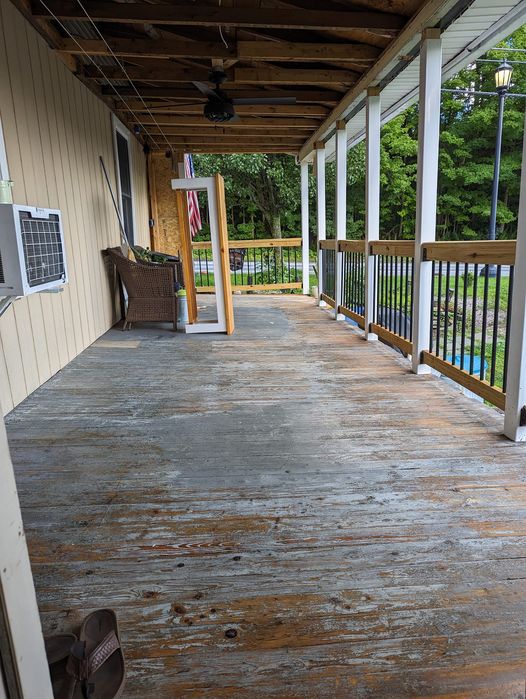How can I finish my porch before winter without compromising the old growth wood and damaged edges?
Looking for some advice on how to get this porch project done before the snow hits! 😅
We’re currently in the process of turning our old enclosed porch into an open three-season space (with some panels to help keep it cozy in the winter). We discovered that a lot of the wood on the porch is original and dates back to when the house was built in 1850! Pretty cool, right? But, if you take a closer look at the picture, you can see that the edges of the overhang have seen better days. My plan is to strip off the paint, sand it down, give it a dark stain, and then seal it up.
I was thinking of adding some trim to the edges, but I’m worried about water damage. Unfortunately, we don’t have a lot of old growth wood left from the house to use. So, I’m considering cutting it back and adding a vertical board to create a clean edge. That seems like the best option to me. What do you think?
(And if anyone wants to help me out with the paint removal, I’d be forever grateful. My hands are not happy with me right now! 😂)
Thanks in advance! 🖤

I’d definitely be cautious about lead paint considering how old the porch is. When trimming the ends of the boards, it’s important to ensure there is adequate support for the newly cut ends. Sealing them should be fine if you add a skirt board. I’m a bit concerned about the connection of the support posts to the porch – it’s essential to confirm the base isn’t decaying since there appears to be a veneer on them. Removing the A/C will also be necessary. ‘t forget to look into obtaining a permit for the project. It’s possible that electric outlets will be needed. (Insulating the floor could help reduce your heating expenses.)
Hey there Judith! I just wanted to let you know how much I appreciate your thoughtful response! Luckily, I have some experience working for a municipality in the housing section, which has been really helpful. In our small town, we don’t need permits for our work, only zoning approval if we make changes to the footprint or lot coverage. I used a certified lead paint kit to test and thankfully it came back negative! There were a few areas that worried me, but I was able to address them using approved methods. The remaining areas are close to where I tested. When we work on the skirt board (thank you for reminding me of the term), we’ll be gently lifting the porch in that area to check underneath and ensure the frame is still in good condition. The space under the porch is open, so we can easily inspect it. Lastly, our air conditioning isn’t used much, and we’re looking to upgrade our heating system next year to add cooling. Your suggestion about supporting the ends of the boards has got me thinking, and I’ll probably ask my father for help – he’s been a huge support and has built a few decks in his time around. ☺️
Remember to oil the deck and the bevelled edges